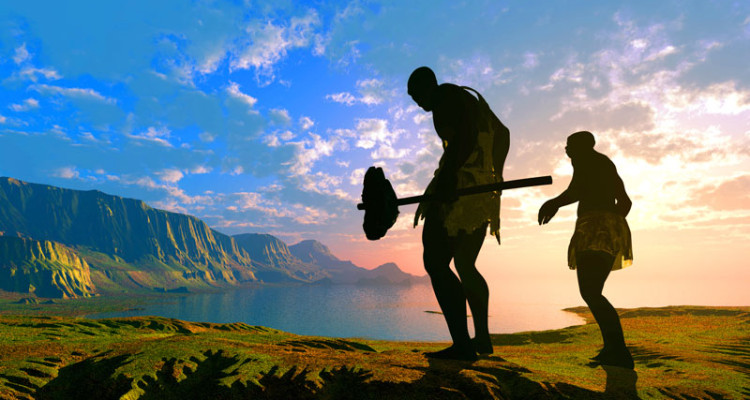Paleolithic eating has taken the fitness world by storm, and it’s easy to see why. The diet cuts out processed foods, gives a specific plan for clean eating, and has the inherent appeal of looking to “ancient wisdom” for the answer to a modern day problem (plus, unlimited bacon). But what’s the best paleo workout?
The primitive diet has become especially favored among the CrossFit dedicated, due to the amount of muscle developing they do. This protein-rich diet gained popularity in 2010 with the publication of Loren Cordain’s book, The Paleo Diet. The basis of the diet is to replicate the eating habits of pre-agricultural humans who, until about 10,000 years ago, were hunter-gatherers. This means avoiding grains, legumes, and dairy, and consuming more lean meat, fruit, and certain vegetables.
But what would real paleo workouts look like? Certainly not flipping tires and kipping pull-ups in an industrial park gym. More likely it would be long days spent trailing potential pray—in fact, it might align more to what marathoners do.
Surprised? Well here’s another surprise for you: despite how awesome you think you are, we’re not exactly the beefcakes of the animal kingdom.
“We’re so pathetic,” Florida Gulf Coast University professor of anthropology William Locascio says. He adds that when you compare our physical strength and speed to that of other apex predators—say, the cheetah—we’re pretty unimpressive. Imagine yourself in the Kalahari Desert; when your competitors for food would be lions and hyenas, you’re more likely to become the meal.
But don’t worry—humanity possesses a number of unique adaptations that encourage a long, slow trek: our legs are long and cover ground in an efficient, pendulum motion; an upright posture exposes only our heads and shoulders to the sun; and we sweat, using moisture to pull heat away from our bodies. All these advantages allowed us to track animals to exhaustion. It’s called “persistence hunting,” and it became our predatory niche—the original paleo workout.
Some adaptations are easily witnessed in comparison to our closest evolutionary relatives. Put Rich Froning—a four-time CrossFit champion—against a chimpanzee in a pull-up contest, and the chimp will wipe the floor with him. But Froning would easily take the ape over a 10 kilometer run. This conforms to the evidence that hunter-gatherers were covering anywhere between four (for females) to nine (for males) miles daily, distances that today’s isolated tribes continue to hit.
“I don’t understand where the primal population is gaining any sort of support for their ideas in archaeology,” said Professor Locascio. “What’s the basis, what’s the evidence for lots of heavy lifting?”
If anything, “it was that sort of gradual, continuous physical activity,” says Locascio. “If you carried a child on your back, as many people did, that might make it more demanding.”
One way Crossfit does successfully mimic a true paleo workout is by encouraging group training. For early humans, going it alone was a death sentence. So any sort of communal exercise is channeling that prehistoric, better-together experience. And the idea of moving regularly throughout the day—that’s another primal habit that all of us should adopt. For most of Homo sapiens’ existence, there was no distinction between working and working out; they were one in the same. Maybe next time you find yourself wandering into the kitchen to scavenge some nuts, consider what your ancestors likely did and maybe walk around a bit as you pop them in your mouth—a minor paleo workout in and of itself. “[Exercise was] more the routines of day-to-day life, rather than carving out the time for it,” says Prof. Locascio.
While lifting huge rocks or climbing up ropes might make someone feel more like a cave (wo)man, it may not have too much basis in anthropological science. That said, there is physiological science showing that heavy weightlifting and wind sprints can produce big health benefits. So whether you’re a highly evolved human or a primal animal, all of us can benefit from regular visits to the pain cave.


